What is the Voltage Reduction Device (VRD) in a Welder - Everything You Need To Know
Wondering what is VRD in welding? You came to the right place. VRD is an essential safety feature for stick welding, designed to prevent electrocution. Read on to learn how VRD works and when you should use this safety mechanism.

What Is VRD in a Welding Machine
A voltage reduction device (VRD) can be a standalone element you add to your welding machine, or it can be built into the welding power source. For example, our YesWelder CT2050 has the VRD function integrated, allowing you to turn it on and off with a click.
FIRSTESS CT2050 Powerful 7-in-1 Welder & Cutter
VRD reduces the open circuit voltage (OCV) of your welder when not welding. As a result, it becomes highly unlikely to get accidentally electrocuted. However, as soon as you start welding, VRD automatically turns off and lets the OCV rise to its maximum in order to establish an arc.
VRD is typically used for the stick welding process because the electrode is live as soon as the welding power source is turned on. The voltage between the negative and positive terminal, the OCV, is ready to strike an arc or to electrocute you if you find yourself between the electrode and the ground clamp. The VRD is also used for DC lift and scratch start TIG welding because the tungsten electrode is also live as soon as the welder is powered on. However, High-Frequency TIG machines usually don't need a VRD. Since the HF TIG arc only initiates when you press the button on the torch, the tungsten electrode isn't live until you do so, and there isn't a risk of electric shock.
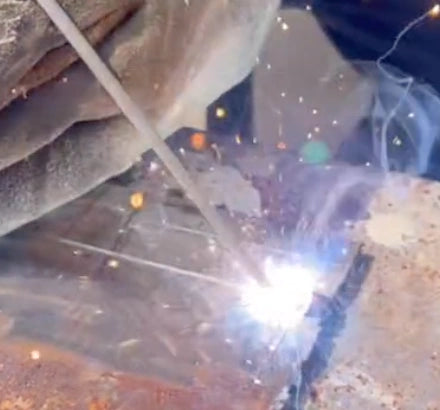
What Is Open Circuit Voltage?
Open circuit voltage (OCV) is the voltage that exists between the positive and negative terminals of the welding machine. Naturally, OCV also exists between the stick/TIG electrode and the ground clamp once they are attached and the machine is powered on.
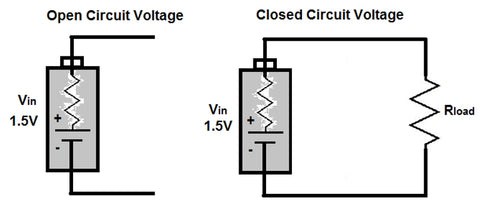
Source: https://shipbuildingknowledge.wordpress.com/2017/11/28/cswip-3-1-what-is-ocv-open-circuit-voltage-in-welding-power-source/
OCV can range between 30V and 100V depending on the welding process and the machine's power. Some OCV examples on YesWelder machines are:
- YesWelder CT2050 OCV - 72V
- YesWelder MIG-205DS - 65V
- YesWelder YWT-200DC Lift TIG Spot Welder - 60V
A lot of planning and engineering goes into the process of designing an inverter welding machine, and OCV is one of the essential specs critical for arc start and stability.
The higher the OCV, the easier it is to strike an arc, especially with stubborn electrodes like the E6010 and E7018. However, the higher the OCV, the higher the likelihood of getting shocked. So, there is a trade-off between arc stability and safety that every machine must meet. So, while you would want a high OCV, you also must pay more attention to electrical safety when using high OCV machines.
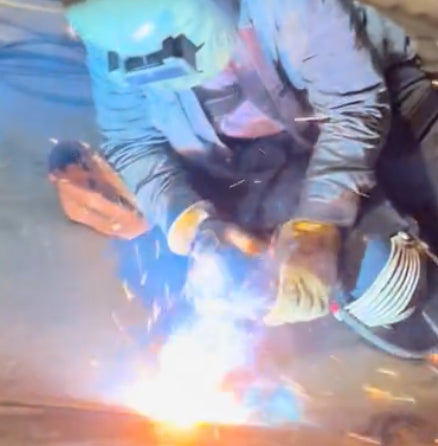
How VRD Works
Machines with the VRD setting, like YesWelder CT2050, have the ability to reduce OCV down to minimal levels when they detect high resistance at the electrode and ground clamp.
YesWelder CT2050 with Built-in Auto VRD
But, what does this "high resistance" mean exactly?
Essentially, metals have lower resistance to current flow than human skin and air. So, when the electrode is in contact with air or your bare hand, and not metal, the VRD reduces the OCV. The VRD detects high resistance to the flow of electricity and reduces the OCV. But, when you touch the metal with the electrode, it detects low resistance and increases the OCV, which makes arc starting much easier. Without VRD, you could get shocked as OCV can be high enough to produce a shock, especially with moist skin.

However, you should never tempt electricity and try to touch the live electrode, even if you have the VRD turned on. This feature should be the last resort to prevent electrocution. While human skin has high resistance, any moisture, like sweat, can dramatically reduce the resistance. Still, VRD can prevent electrocution even when your skin is wet. But, these kinds of scenarios should be consciously avoided whenever possible.
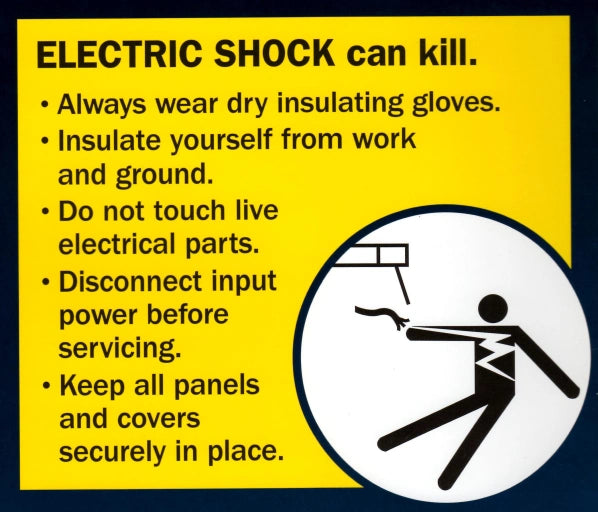
Source: https://ceekaysupply.wordpress.com/2012/11/02/welding-safety-avoiding-electric-shock/
Should You Turn the VRD Function Off
We do not recommend turning the VRD function off on welders that support it, especially when working in cramped, wet, damp, and salty environments.
High moisture and high salt content in the air can make it significantly more likely to get shocked when stick welding. The best example is working in shipyards and offshore platforms. But, sweaty hands from hot days can also contribute to electrocution. So, if your welder supports VRD, we recommend switching it on.

If you work in confined spaces, it's especially important to use VRD. In a tight area, there isn't much room to escape electrocution and to let go of the stick electrode holder. Likewise, it's easier for air to become overly saturated from moisture in the air, which could reduce your skin's resistance and increase the likelihood of getting shocked.

Sometimes, it can be beneficial to turn off the VRD function in order to strike an arc with less hassle. But, this must be done with great care. Ensure that you aren't working in wet and damp conditions and that no one else can get shocked.
*Keep in mind that it may be illegal to turn off VRD in some professional environments, depending on your local safety codes, standards, and laws.
🧐What is the Voltage Reduction Device (VRD) in a Welder FAQ
1. What Is VRD in a Welding Machine?
A voltage reduction device (VRD) can be added to your welding machine or built into the power source. It lowers the open circuit voltage (OCV) when not welding, reducing the risk of accidental electrocution.
Essential for stick welding and DC lift and scratch start TIG welding, VRD ensures safety by deactivating when welding begins. High-frequency TIG machines typically don't need VRD since the arc only initiates when the torch button is pressed, eliminating the risk of electric shock.
2. How VRD Works?
👏 You may be interested in the following:




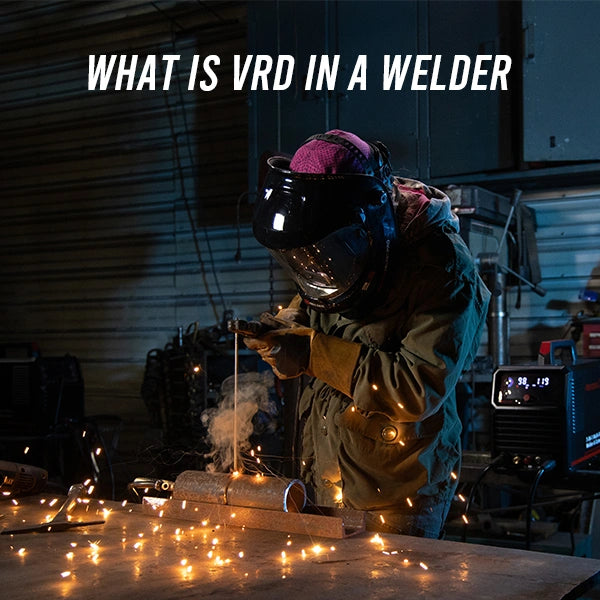
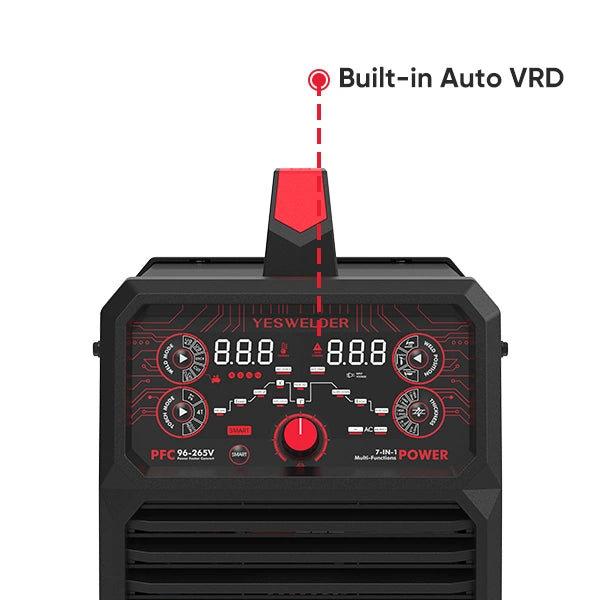



Leave a comment